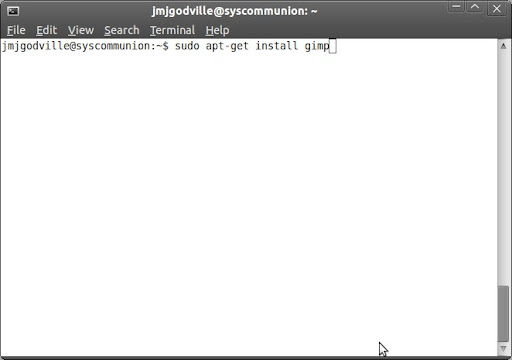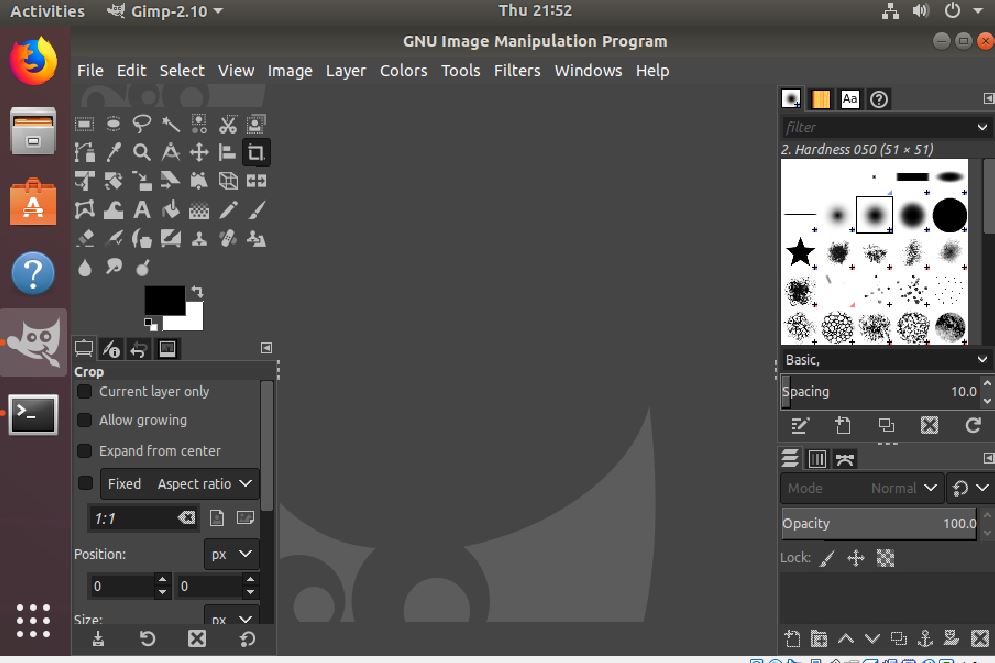
- #Gimp linux terminal how to
- #Gimp linux terminal install
- #Gimp linux terminal full
- #Gimp linux terminal windows 10
- #Gimp linux terminal pro
This is how you properly crop an image using the GIMP tool in Linux. ➋ Now, pull your mouse from any corner to where you the picture to be cropped and then press ENTER.Īnd so the image is cropped. Look at the picture below to understand properly. ➊ First click on Tools from the menu bar then, select Transform Tools from there select Crop. Now follow the steps below to crop an image perfectly. If you want to crop an image using GIMP in Linux you will have to select the crop tool or just press CTRL+C.
#Gimp linux terminal how to
Next, I will show you how to crop an image using the GIMP application. So this is how GIMP is used to scale an image. ➋ Now, the scaling window will pop up, give your expected resolution and finally click on scale. ➊ Click on the Image button from the menu bar then, click on the scale image from the drop-down menu. If you want to scale your image to your own preference then follow the steps below. How to Edit Image File with GIMP Image Scaling Now in the next section, I will show you how to work with an opened file. So this is how you open an image inside the editor GIMP. ➎ Finally browse through the machine and select the file that you want to open inside the editor. ➍ From the drop-down menu click on open file ➌ Now, click on File in the upper right corner of the menu bar. ➋ Now click on the icon the application window will open up. ➊ Go to your application menu and search GIMP. First I will show you how to open a file inside the GIMP editor. In this section, I will show you how to work with GIMP. How to Open Image Files with GIMP in Linux
#Gimp linux terminal install
So in the next section, I will show you how to install GIMP using the GUI. Now I installed this application using the CLI(Command Line Interface) but I could have done that using the GUI(Graphical User Interface). So this is how you can install GIMP on your system.

This will start the installation, you will see a window like below. ➍ Type your user password and press ENTER. ➌ Now, write the command below to install GIMP.

Now, look at the picture below to see the command output. This command looks through the entire machine for available GIMP files to install. ➋ Write the following commands and press ENTER. Now follow the steps below to see how to install the GIMP editing tool. For enabling the root user privilege sudo command is necessary. Then you will install the software using root user privilege. If you want to install GIMP, you first have to find the GIMP files in your system. ➏ You can check if the application is installed from the application menu. Give the password and the installation will start. ➍ Now, click on GIMP and the install button. ➌ Now, click on the search icon in the upper left corner and search for gimp. If you want to use the GUI to install GIMP you have to use your machine keyboard and mouse.
#Gimp linux terminal full
file parameter with and without quotation marks, full path.


#Gimp linux terminal pro
alternativly on a clean Windows 11 Pro 21H2 22000.795.I got rid of the message 'No batch interpreter specified' by adding -batch-interpreter plug-in-script-fu-eval. If I missspell the function name 'mytest' or pass a non-existing file name as the first argument (something.jpeg), I won't receive an error message. No batch interpreter specified, using the default 'plug-in-script-fu-eval'. Starting extension: 'extension-script-fu' What happens: A protocol window opens, containing: I am expecting 'p1.jpeg' being an exact copy of 'p.jpeg' to be written out in the same directory. To start the script, 'cd' to the directory (which is %userprofile%\pictures) containing the source image 'p.jpeg' and invoke: "C:\Program Files\GIMP 2\bin\gimp-2.10.exe" -idf -b '(mytest p.jpeg p1.jpeg)' -b '(gimp-quit 0)' -verbose Thus, also the location of the script is correct, as well as the set script paths under options. While testing, I also added a 'script-fu-register' block that let's me check in GIMP's procedure browser that the script was detected and loaded without errors. (gimp-file-save RUN-NONINTERACTIVE image drawable out_filename out_filename) (drawable (car (gimp-image-get-active-layer image)))) (image (car (gimp-file-load RUN-NONINTERACTIVE in_filename in_filename))) It is supposed to read a file and write it out again under a different name, without applying any modifications: (Source: ) (define
#Gimp linux terminal windows 10
I can't get any GIMP Fu script to work (using Gimp 2.10.32 (Revision 1) on Windows 10 Pro 21H2 19044.1826).Ĭonsider this minimal script.


 0 kommentar(er)
0 kommentar(er)
